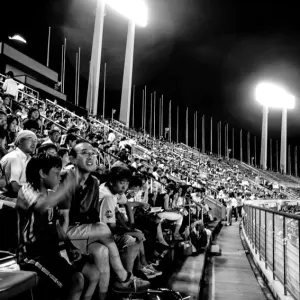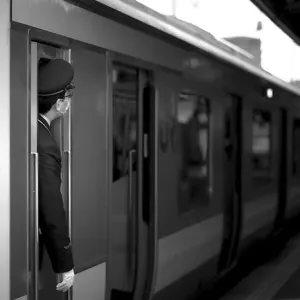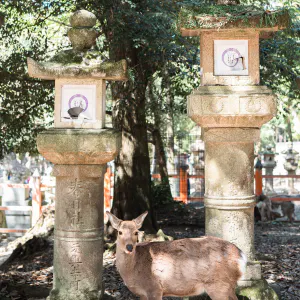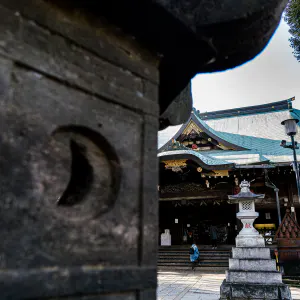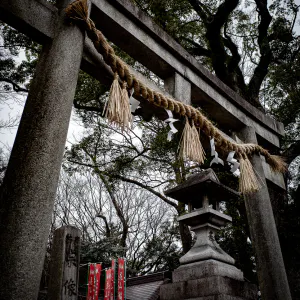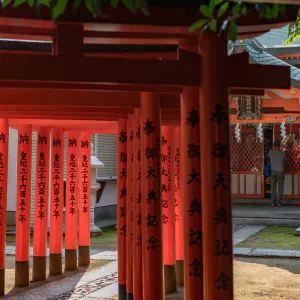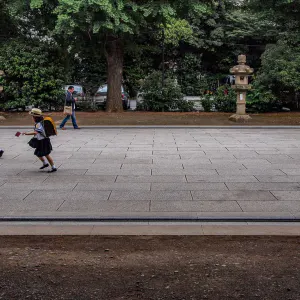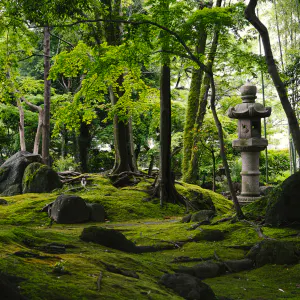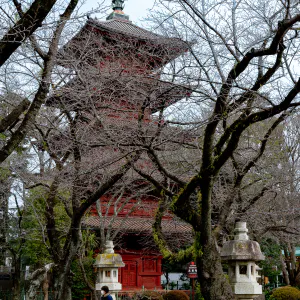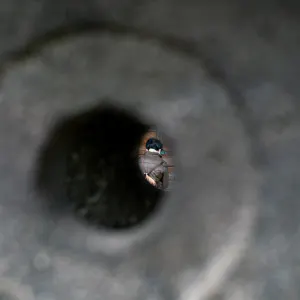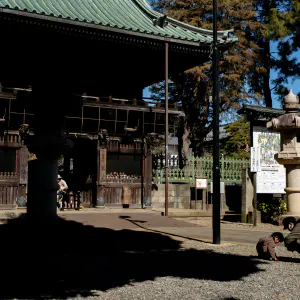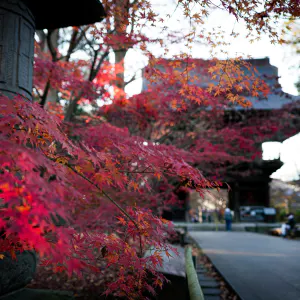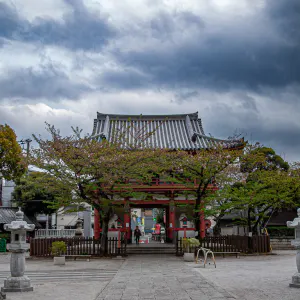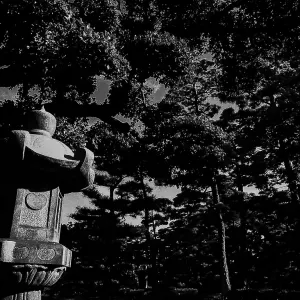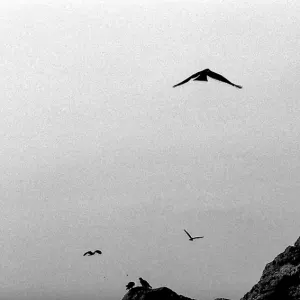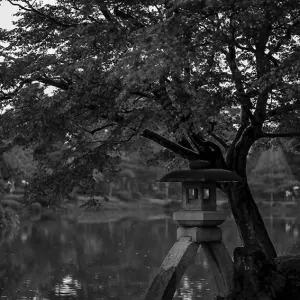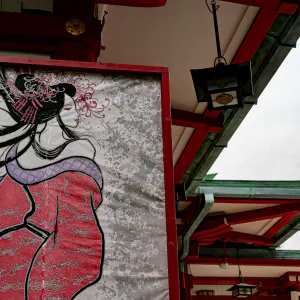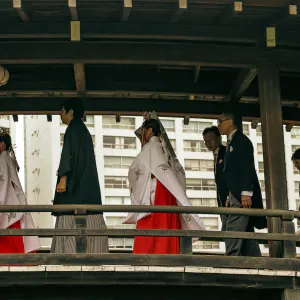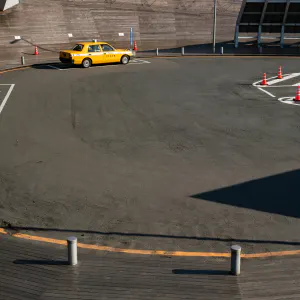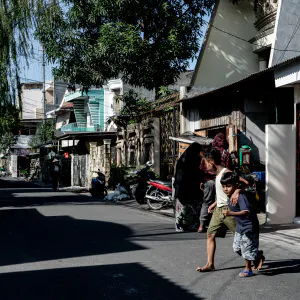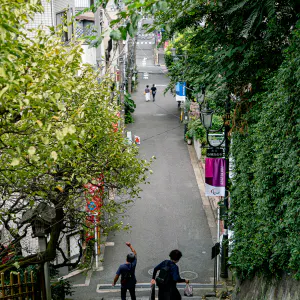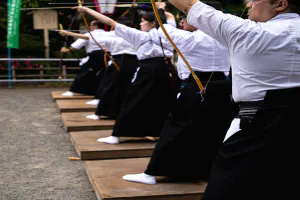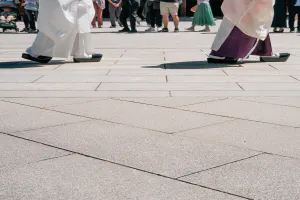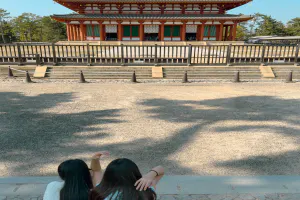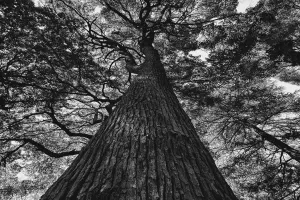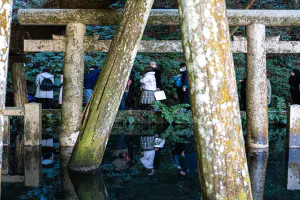A large guardian dog sat on the back approach of Hatomori Hachiman Jinja Shrine

I turned off from Meiji-dori street and walked through a residential area, and ended up at a place where trees grew thickly. It was Hatomori Hachiman Jinja Shrine. It is the main shrine of the Sendagaya area.
The first thing that greeted me as I stepped through the torii gate into the shrine grounds were the guardian dogs. Even though they welcomed me, they were sitting on a magnificent stone pedestal and their eyes were not on the people walking along the path. They were placed there to protect the temple grounds and ward off evil, but they didn't seem to be the least bit interested in the worshippers who were walking down the approach.
In Buddhist temples, Vajrapani is often placed for the same purpose of protecting the temple grounds. In Shinto shrines, on the other hand, it is the guardian dogs that are placed. Am I the only one who thinks that there is a stark contrast between the Vajrapani's tremendous appearance and its apparent strength? Dogs are also used as guard dogs, and if they bite you, it must hurt. However, I have a feeling that if they fought with Vajrapani, Vajrapani would surely win.
It is said that guardian dogs called komainu originated in Persia and India. It is said that they were originally lions, but somehow changed to dogs on their way to Japan. It is true that a lion seems to be able to protect sanctuaries such as shrines and temples and prevent evil from entering. Even in Nepal, the entrance to the royal palace was guarded by a large, strong-looking lion. I wonder why they turned into dogs. It seems much stronger than a cat, though.
| May 2021 IN THE CITY TOKYO | |
| GUARDIAN DOG KIMONO SENDAGAYA SHRINE STONE LANTERN |
PHOTO DATA
No
11904
Shooting Date
Jun 2020
Posted On
May 12, 2021
Modified On
August 22, 2023
Place
Sendagaya, Tokyo
Genre
Street Photography
Camera
RICOH GR III

